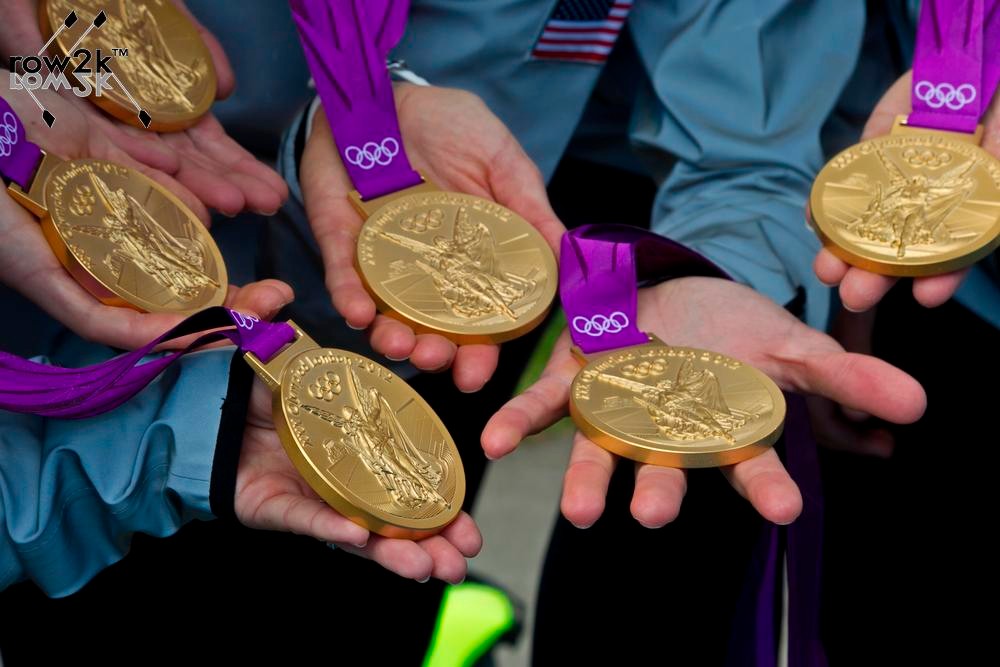"So well thy words become thee as thy wounds; they smack of honour both."
-- W. Shakespeare
Blisters happen. Friction causes layers of the skin to tear away from each other, and the cavities thus formed then fill with serum (the liquid part of blood, without the cells). Serum provides a sterile protection to allow the layers of skin underneath to heal, which is why one should avoid popping them if at all possible. Because rowing blisters often form in places where pressure will pop them anyway, this is sometimes unavoidable. Lancing them with a sterilized pin (soaked in rubbing alcohol or hydrogen peroxide) so they can drain cleanly is the next best choice.
(Better still, let your coxswain do it; we live for stuff like that.) Swab the whole area with alcohol or hydrogen peroxide, and make a clean, small hole no larger than absolutely necessary to allow the blister to drain. Cover with clean gauze, and change the dressings frequently, reapplying the alcohol or hydrogen peroxide often.
Infection is the main complication. Blisters which fill with milky white pus -- or worse, have red streaks leading away from them, should be seen to immediately by a medical professional in order to prevent even more serious infections which -- left untreated -- may require a long course of antibiotics and a hiatus from rowing. (Coxswains sometimes fancy themselves as ex-officio on-board medical officers, and you don't want to give them any excuse to show off their self-assigned surgical prowess by amputating your entire arm while at sea.) If you do bleed on your oar handle, be sure to wipe it down with clorox swabs -- every boathouse should keep a supply of them.
Do not share -- or reuse -- hydrogen peroxide or the swabs. (Oh, you'd be amazed.) "C" and "T," I'm talking to you.
Some rowers tell me that rubbing a very thin layer of vaseline on their palms – just enough to reduce friction but not enough to make the oar handle slippery -- at the beginning of crew season helps prevent blisters until their skin hardens. They also warn that certain acne medications can soften your skin, and may leave you especially vulnerable to forming blisters; you may want to ask your doctor about these.
Apples, carrots, cauliflower, and grapefruit contain nutrients considered to be particularly good for the skin, and may mitigate the effect of blisters. In any case, they are good for you generally. These, and other foods containing vitamin A and C, will speed healing and resist infection.
Lastly, blisters are in no way a reflection of a rower's toughness. Some of the toughest rowers I've ever had the honor to work with could not so much as look at an erg without their hands turning to hamburger. Nor were they necessarily gripping their oars too tightly (although this can be a causative factor). Blisters just happened to them.
If you enjoy and rely on row2k, we need your help to be able to keep doing all this. Though row2k sometimes looks like a big, outside-funded operation, it mainly runs on enthusiasm and grit. Help us keep it coming, thank you! Learn more.
- Bont Rowing
- Calm Waters Rowing
- Concept 2
- Craftsbury Sculling
- The Crew Classic
- CrewLAB
- Croker
- Dad Vail Regatta
- Durham Boat Co.
- Empacher
- Faster Masters
- Filippi
- Fluidesign
- h2row.net
- HUDSON
- Live2Row Studios
- Nielsen-Kellerman
- Oak Ridge RA
- Peinert Boat Works
- Pocock Racing Shells
- Race1 USA
- Rockland Rowing Masters Regatta
- RowKraft
- Rubini Jewelers
- Vespoli USA
- WinTech Racing
- Bont Rowing
- Calm Waters Rowing
- Concept 2
- Craftsbury Sculling
- The Crew Classic
- CrewLAB
- Croker
- Dad Vail Regatta
- Durham Boat Co.
- Empacher
- Faster Masters
- Filippi
- Fluidesign
- h2row.net
- HUDSON
- Live2Row Studios
- Nielsen-Kellerman
- Oak Ridge RA
- Peinert Boat Works
- Pocock Racing Shells
- Race1 USA
- Rockland Rowing Masters Regatta
- RowKraft
- Rubini Jewelers
- Vespoli USA
- WinTech Racing

















